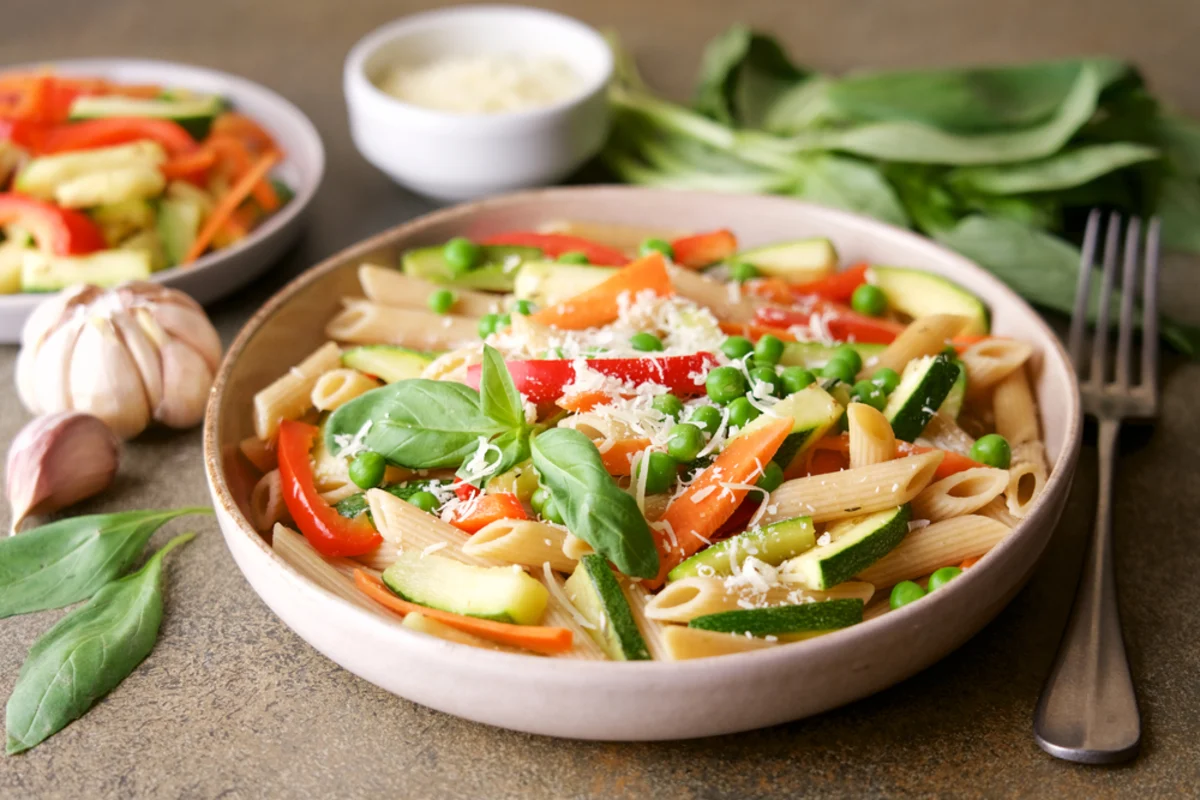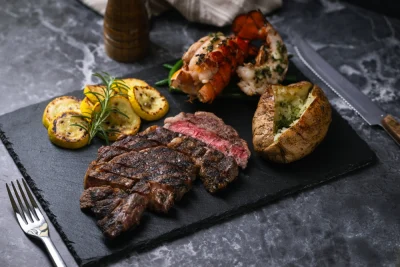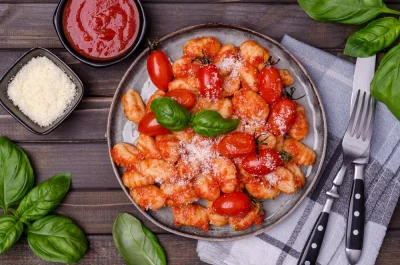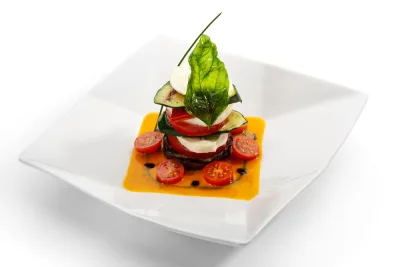
Pasta Primavera Recipe: Fresh Flavors and Wine Pairings for Every Table
Introduction
When spring and summer hit, few dishes celebrate the vibrancy of fresh vegetables quite like pasta primavera recipe. It's a classic, colorful pasta dish that brings together the best of the season—crisp bell peppers, zucchini, snap peas, and sweet cherry tomatoes all tossed in a creamy, tangy sauce. For food enthusiasts and home cooks across the United States, pasta primavera is more than just a meal—it's an invitation to savor freshness, experiment with flavor, and, best of all, pair your creation with a glass of wine that elevates every bite. Whether you shop at Total Wine, Trader Joe's, or your local grocery store, the possibilities for wine pairing are endless, making this recipe perfect for both weeknight dinners and special occasions.
About This Dish
Pasta primavera—which translates to "spring pasta" in Italian—actually emerged in the United States, rather than Italy. Its birth is credited to the famed Le Cirque restaurant in New York City in the late 1970s, where chef Sirio Maccioni and his team crafted the dish to highlight fresh, seasonal produce in a way that felt both Italian and unmistakably American. Since then, pasta primavera recipes have evolved, reflecting the multicultural influences and wide variety of produce available in the U.S..
What makes pasta primavera so special? It's a celebration of vegetables: every bite is a balance of crunch and tenderness, sweetness and umami, all enveloped in a creamy sauce punctuated by parmesan and a hint of lemon. Unlike heavier pasta dishes, primavera is light, approachable, and endlessly customizable. Its versatility means you can use what's fresh at your market or in your fridge, making it a staple for both busy weeknights and festive gatherings. The dish's popularity has only grown as American home cooks seek meals that are delicious, nutritious, and easy to pair with their favorite wines.
Key Ingredients & Their Role
Let’s break down the key ingredients in this pasta primavera recipe and why each is essential:
- Pasta (Penne): Penne is the classic choice for pasta primavera, offering great texture and enough surface area to capture the creamy sauce and vegetable pieces. You can swap with fusilli, farfalle, or linguine for variety.
- Olive Oil: Extra virgin olive oil forms the flavor base, adding richness and a fruity aroma that enhances the vegetables and complements the wine pairing.
- Garlic: Minced garlic brings depth and a gentle heat, creating a savory backbone that makes the vegetables pop.
- Bell Peppers (Red & Yellow): These add crunch, color, and sweetness, creating contrast with the creamy sauce and savory elements.
- Zucchini & Sugar Snap Peas: Both are tender yet crisp, bringing a mild, garden-fresh flavor and lovely green hues to the plate.
- Cherry Tomatoes: Their sweet acidity balances the cream and cheese, keeping the dish lively and fresh.
- Vegetable Stock & Heavy Cream: Vegetable stock builds umami, while heavy cream creates the signature luscious sauce that coats every strand of pasta.
- Parmesan Cheese: Adds a nutty, salty umami kick that ties the sauce together and adds richness.
- Lemon Juice: A splash of lemon brightens the whole dish, enhancing the vegetables and cutting through the richness of the cream and cheese.
- Parsley: Fresh parsley provides herbal notes and color, making each bite taste even fresher.
- Salt & Black Pepper: Essential for seasoning and flavor balance.
When thinking about wine pairing, these ingredients matter. The combination of creamy sauce, fresh vegetables, and umami-rich parmesan calls for wines with crisp acidity, gentle body, and enough fruit to play off the brightness of the dish. This makes pasta primavera the perfect canvas for exploring both white and light red wines, especially those with fresh, citrusy, or herbal notes.
Recipe
| Prep Time | 30 minutes |
|---|---|
| Cook Time | 10 minutes |
| Total Time | 40 minutes |
| Servings | 4 |
| Difficulty | Moderate |
Ingredients:
- 350g Penne pasta
- 3 tbsp Olive oil
- 3 Garlic cloves (minced)
- 1 Red bell pepper (sliced thinly)
- 1 Yellow bell pepper (sliced thinly)
- 1 medium Zucchini (sliced into thin sticks)
- 150g Sugar snap peas (trimmed)
- 150g Cherry tomatoes (halved)
- 1 Vegetable stock cube (or 1 tbsp liquid vegetable stock)
- 150ml Heavy cream
- 50g Parmesan cheese (finely grated)
- 1 tbsp Lemon juice (freshly squeezed)
- 2 tbsp Fresh parsley (finely chopped)
- To taste Salt
- To taste Freshly ground black pepper
Instructions:
- Bring a large pot of salted water to a boil. Cook the penne pasta according to package instructions until al dente. Reserve 1/2 cup of pasta water, then drain and set aside.
- While the pasta cooks, heat 2 tbsp of olive oil in a large skillet over medium heat.
- Add the minced garlic and sauté for 30 seconds until fragrant.
- Stir in the red and yellow bell peppers, cooking for 3-4 minutes until slightly softened.
- Add the zucchini and sugar snap peas, sautéing for another 5 minutes until tender yet crisp.
- Stir the halved cherry tomatoes into the vegetables. Cook for an additional 2 minutes until they begin to soften slightly.
- Add the vegetable stock cube dissolved in 50ml of hot water (or 1 tbsp liquid vegetable stock) to the skillet. Stir to combine.
- Reduce the heat to low and pour in the heavy cream, stirring until well mixed. Simmer gently for 2-3 minutes.
- Stir in the cooked pasta and reserved pasta water to the skillet. Toss gently to coat the pasta in the sauce.
- Remove from heat and stir in the lemon juice, parsley, and 40g of the grated Parmesan cheese. Season the dish with salt and freshly ground black pepper to taste.
- To serve, divide the pasta primavera evenly among four plates. Garnish with the remaining Parmesan cheese and a drizzle of olive oil. Optionally, add a sprig of fresh parsley.
Nutrition Facts (per serving):
- Calories: 420 kcal
- Protein: 14.0g
- Fat: 14.0g
- Carbohydrates: 58.0g
- Salt: 1.2g
Dietary Information: Contains gluten, Contains dairy, Nut-free
Perfect Wine Pairings
Pairing wine with pasta primavera recipe is a joy: the dish’s mix of creamy, savory, and fresh vegetable notes opens up a wide range of pairing possibilities. Here’s how to find your perfect match:
Why Certain Wines Work
The creamy sauce and parmesan crave acidity to refresh your palate between bites, while the fresh vegetables call for wines with delicate, crisp fruit flavors. Tannic, heavy reds can overpower the dish, so look for whites, rosés, and light reds with good acidity and subtle herbal or floral notes.
Wine Characteristics to Seek
- Body: Medium to light; avoid full-bodied, oaky wines.
- Acidity: Bright and lively to cut through cream and refresh the palate.
- Tannins: Low; strong tannins clash with the vegetables.
- Fruit/Herbal Notes: Citrus, green apple, stone fruit, subtle herbaceous hints.
Top Wine Styles for Pasta Primavera
- Sauvignon Blanc (California, France, New Zealand):
- Crisp, citrusy, and herbal, it complements the green vegetables and creamy sauce beautifully.
- Try a bottle from Napa or Sonoma for a local touch, or the Loire Valley for a French classic.
- Look for bottles at Total Wine or Trader Joe’s ($15–$25).
- Pinot Grigio (Italy, Oregon):
- Light and refreshing, with notes of lemon and green apple.
- Oregon Pinot Grigio offers lively acidity and a clean finish—perfect for primavera.
- Widely available at BevMo and most grocery stores ($12–$20).
- Unoaked Chardonnay (California):
- Skip the buttery, oaky styles—unoaked Chardonnay brings bright citrus and crispness.
- Sonoma and Central Coast producers offer excellent options.
- Expect to pay $18–$28 at Total Wine or local wine shops.
- Rosé (Provence, California):
- Dry rosé, especially from Provence or California, brings red berry notes and floral aromas that match the dish’s brightness.
- Trader Joe’s and BevMo often carry great value options ($10–$25).
- Pinot Noir (Oregon, California):
- For those who prefer reds, opt for a light-bodied Pinot Noir with low tannins and high acidity. Its delicate cherry and earthy notes won’t compete with the cream sauce.
- Oregon Pinot Noir is a classic; find bottles at Total Wine ($20–$30).
Local Market Availability
You’ll find these wine styles at retailers like Total Wine, Trader Joe’s, and BevMo, as well as in local wine shops and major grocery stores nationwide. The $15–$30 price range offers excellent quality and value, so you don’t need to splurge for a memorable wine pairing.
Using Vinomat for Pairing
Not sure which bottle to choose? Vinomat’s wine and food pairing app makes it easy to discover new favorites and get personalized recommendations based on your taste and menu—just enter "pasta primavera recipe" and explore pairings tailored to your preference and local availability.
Cooking Tips & Techniques
Elevate your pasta primavera recipe with a few professional touches:
- Prep all veggies before you start: Uniform slicing ensures even cooking and a visually appealing dish.
- Don’t overcook vegetables: Aim for tender-crisp—not mushy. Sauté in stages, starting with firmer veggies (bell peppers, zucchini) and adding tender ones (snap peas, tomatoes) later.
- Reserve pasta water: Its starch helps bind the sauce and create a silky texture. Add gradually until you reach the desired consistency.
- Season well: Taste as you go—salt brings out flavor, while fresh black pepper adds subtle heat.
- Use fresh herbs: Parsley and even a sprinkle of fresh basil boost aroma and flavor.
- Cream and cheese: Add cream off heat to avoid splitting; stir cheese in gently so it melts smoothly.
Common Mistakes to Avoid:
- Overcooking pasta or vegetables: Keep a close eye—al dente is key.
- Using too much cream or cheese: Balance is important; too much can overpower the vegetables.
- Forgetting acid: Lemon juice or zest brightens the whole dish.
For a twist, try a one pot pasta primavera recipe: cook veggies and pasta together for easy cleanup and deeper flavor melding. Or, for summer picnics, explore cold pasta primavera recipes by chilling the finished dish and tossing with a splash of olive oil and lemon juice before serving.
Serving Suggestions
Presenting pasta primavera recipe is all about simplicity and color:
- Plating: Serve in wide, shallow bowls to showcase the vibrant vegetables and creamy sauce. Garnish with extra parmesan, parsley, and a drizzle of good olive oil for shine.
- Accompaniments: Pair with a crisp green salad dressed in lemon vinaigrette and crusty artisan bread to soak up the sauce.
- Setting the Scene: Bring out your best stemware for wine pairings, light a few candles, and play some mellow music—make it a celebration of good taste.
- Outdoor dining: Pasta primavera is perfect for al fresco meals; pack for picnics or garden parties and pour a chilled glass of rosé or Pinot Grigio.
Conclusion
Pasta primavera recipe is a celebration of the freshest flavors, bound together in a creamy, comforting dish that’s easy to make and even easier to love. Whether you’re a seasoned home cook or trying this recipe for the first time, pairing it with the right wine takes the experience to the next level. With Vinomat’s expert wine pairing recommendations, you’ll discover just how rewarding it is to match food and wine perfectly. So, bring together friends, family, and a bottle of your favorite wine, and let pasta primavera shine on your table—again and again.


